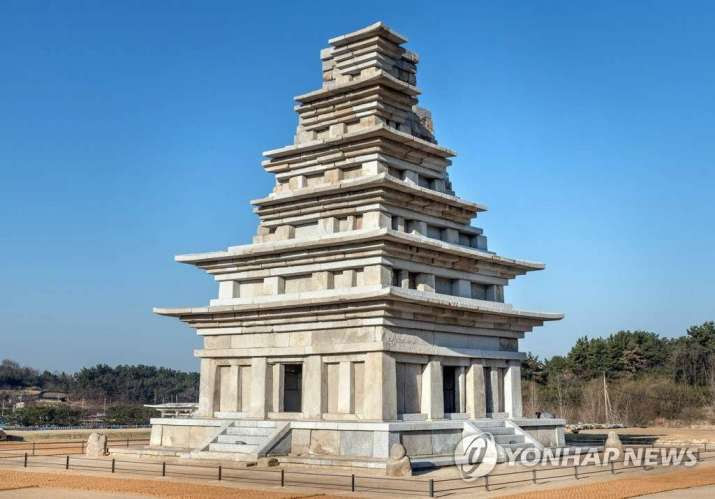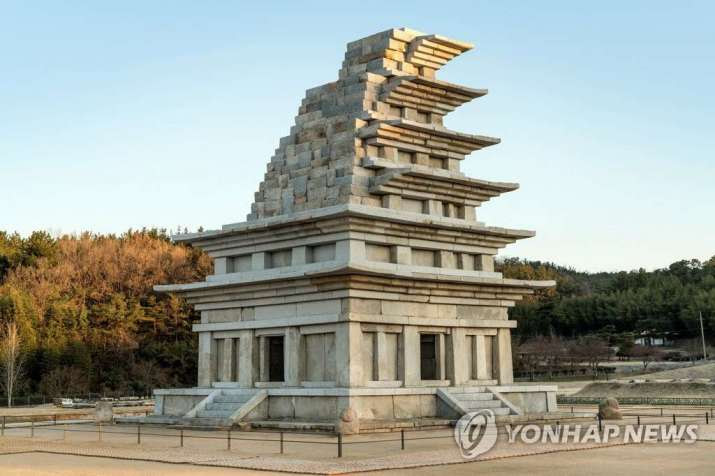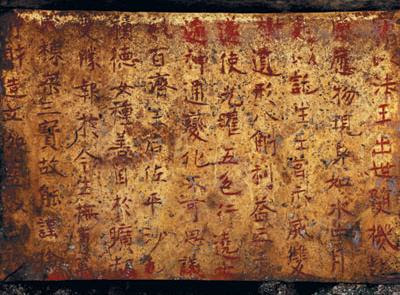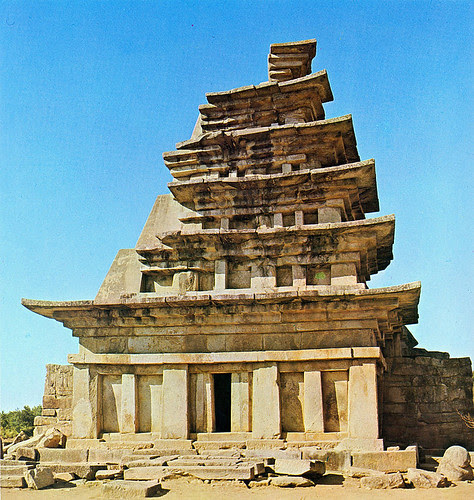
By Shyamal Sinha

Pagoda, a towerlike, multistory, solid or hollow structure made of stone, brick, or wood, usually associated with a Buddhist temple complex and therefore usually found in East and Southeast Asia, where Buddhism was long the prevailing religion.
The pagoda structure derives from that of the stupa, a hemispherical, domed, commemorative monument first constructed in ancient India. Initially, these structures symbolized sacred mountains, and they were used to house relics or remains of saints and kings. Stupas evolved into several distinct forms in various parts of Asia. The finial, the decorative crowning ornament of the stupa, likely has roots in Hinduism, which predates Buddhism, in the symbols of yoni and lingam.
The cultural heritage authorities of South Korea today officially unveiled the country’s oldest stone Buddhist pagoda following a record restoration effort that stretched over almost two decades—the longest is the country’s history. The Iksan Mireuksaji Stone Pagoda (익산 미륵사지 석탑) at the ancient Mireuksa temple complex in southern North Jeolla Province is the oldest extant stone pagoda in South Korea, constructed during the influential Baekje kingdom (18 BCE–660 CE).
Standing 14.5 meters high, 12.5 meters wide, and weighing some 1,830 tons, the restored pagoda,designated as National Treasure No.11 and standing in the west of the Mireuksa temple complex, now has only six tiers, but historians believe it originally had nine, matching Mireuksa’s 27.67-meter, nine-level eastern pagoda, which was completely reconstructed in 1993 in accordance with historical records. The pagoda is believed to have lost its upper levels sometime in the 16th century during the Kingdom of Great Joseon (1392–1897), which favored Confucianism over Buddhism.
The National Research Institute of Cultural Heritage, which has led the lengthy project, noted that a full report would soon be published detailing the restoration process, which cost an estimated US$20.3 million, including the dismantling and reconstruction of the Buddhist monument.

“We made special efforts to secure the ingenuity and the structural stability of the stone tower of Mireuk Temple,” an institute official was quoted as saying. “We plan to publish a report outlining the result and the process of the restoration work by the end of this year.” (Yonhap News Agency)
Established during the Baekje kingdom and located in the modern city of Iksan, Mireuksa temple was founded late in the reign of King Mu (r. 600–641). The restored pagoda is one of only two Baekje pagodas that have survived to the present day. It was designated a national treasure in 1962 and was added to UNESCO’s World Heritage list in July 2015 as part of the Baekje Historic Areas World Heritage Site.
Mireuksa was the largest temple in the ancient kingdom of Baekje, which is notable for being instrumental in introducing and propagating Buddhism on the Korean Peninsula, and is now considered an example of the most advanced architectural skills of the Baekje, Goguryeo, and Silla kingdoms, which co-existed on the peninsula. The temple is also renowned for its ancient four-meter stone flagpole supports, which date to the Later Silla (660–935).
An initial makeshift attempt to restore the stone pagoda was undertaken with concrete in 1915, during the Japanese occupation of Korea, after which the monument stood untouched until the National Research Institute of Cultural Heritage initiated the current restoration effort.

process, detailing the pagoda’s origin. From wikipedia.org
In 1999, the institute concluded that the pagoda was in serious need of repair, and the restoration project began in earnest in 2001, becoming Korea’s longest restoration initiative for a single cultural heritage item—the restoration team spent 10 of those years carefully dismantling the pagoda. According to reports, about 185 tons of concrete was removed and new locally sourced granite blocks were commissioned and added to the tower, making up about 35 per cent of the restored structure, which is now composed of 1,627 stone blocks.
In 2009, during the painstaking process to dismantle the pagoda, an engraved gold sheet was discovered shedding new light on the history of the pagoda. The inscription indicates that the monument was commissioned in 639 CE by the second wife of King Mu of Baekje (r. 600–641).
As of 2018, South Korea has 13 listed World Heritage sites,** many of which stand in testament to the country’s long and influential Buddhist heritage, including Seokguram Grotto and Bulguksa Temple in North Gyeongsang Province, the Baekje Historic Areas in South Chungcheong and North Jeolla, the Gyeongju Historic Areas in North Gyeongsang, and the mountain fortress city of Namhansanseong in Gyeonggi.

According to data from the 2015 national census, the majority of South Korea’s population—56.1 per cent—holds no religious affiliation. Christians make up the largest religious segment of the population at 27.6 per cent, while Buddhists account for 15.5 per cent.
source — Buddhistdoor global











